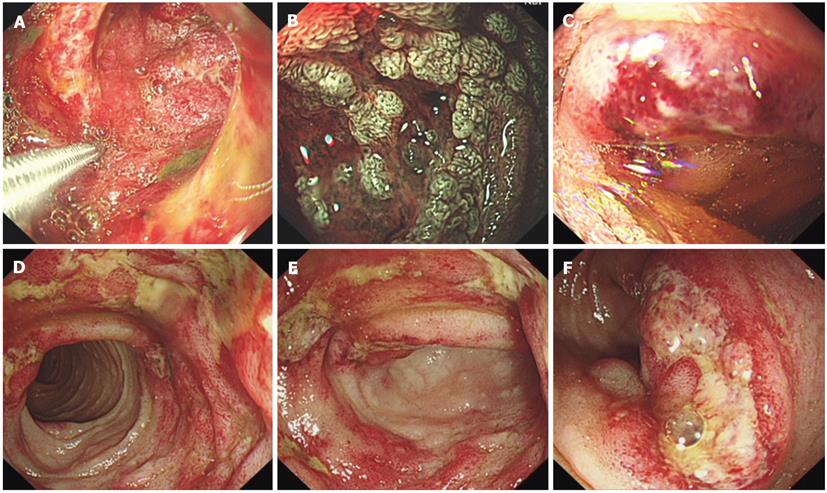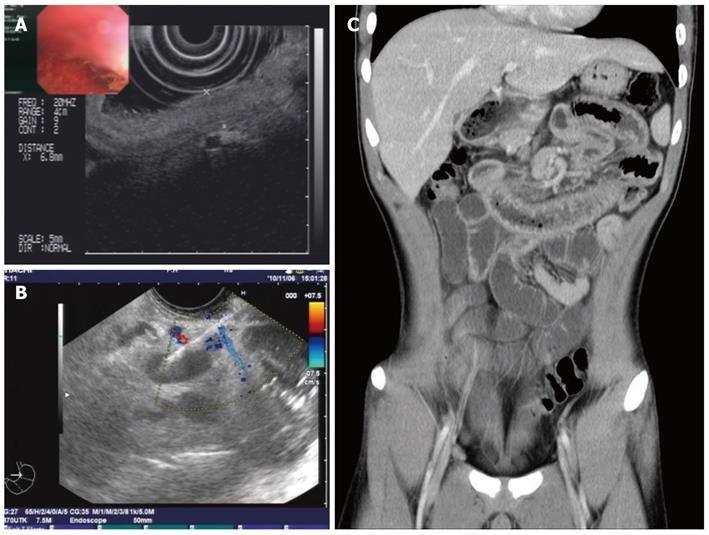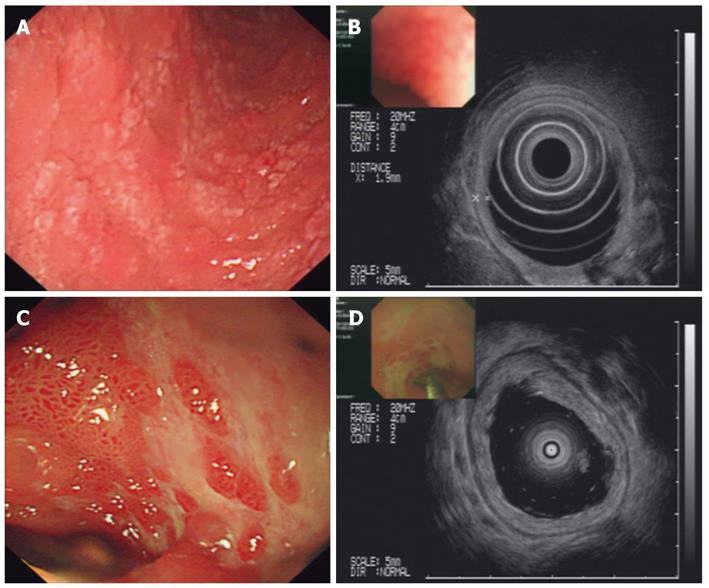Copyright
©2012 Baishideng Publishing Group Co.
World J Gastroenterol. Apr 28, 2012; 18(16): 1991-1995
Published online Apr 28, 2012. doi: 10.3748/wjg.v18.i16.1991
Published online Apr 28, 2012. doi: 10.3748/wjg.v18.i16.1991
Figure 1 The endoscopy examination revealed intestinal damage.
A-C are gastroscopic images, which show significant damage to the duodenum. A: Diffuse redness, swelling, hemorrhage and petechiae in the mucosa; B: Distortion and proliferation of the duplicature (narrow-band image); C: Ulcer; D-F: Colonoscopic images and demonstrate significant damage to the terminal ileum; D: Mucosal hemorrhage and petechiae; E, F: Ulcers.
Figure 2 The ultrasound endoscopy and the computed tomography scan indicated the presence of thickened intestinal mucosa and enlarged abdominal lymph nodes.
A, B: Ultrasound endoscopy scan images; C: Computed tomography scan images.
Figure 3 The extent of damage to the intestinal mucosa improved after treatment.
A: Gastroscopic image of the duodenum; B: Ultrasound endoscopy (EUS) image of the duodenum; C: Colonoscopic image of the terminal ileum; D: EUS image of the terminal ileum.
Figure 4 A percutaneous renal biopsy revealed focal segmental endocapillary crescent-like proliferation.
A: HE staining, 200 ×; B: HE staining, 400 ×; C: Periodic acid-Schiff staining, 200 ×. HE: Hematoxylin and eosin.
- Citation: Chen XL, Tian H, Li JZ, Tao J, Tang H, Li Y, Wu B. Paroxysmal drastic abdominal pain with tardive cutaneous lesions presenting in Henoch-Schönlein purpura. World J Gastroenterol 2012; 18(16): 1991-1995
- URL: https://www.wjgnet.com/1007-9327/full/v18/i16/1991.htm
- DOI: https://dx.doi.org/10.3748/wjg.v18.i16.1991












